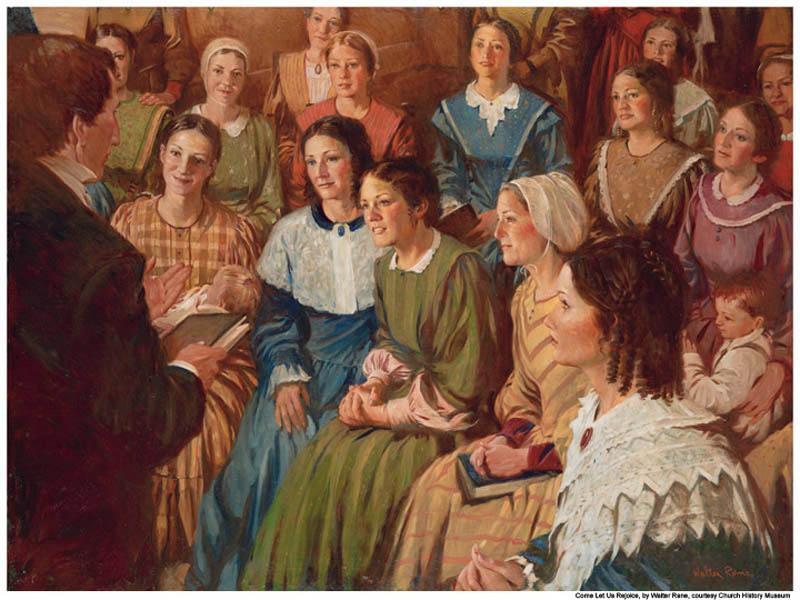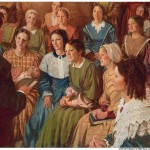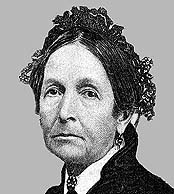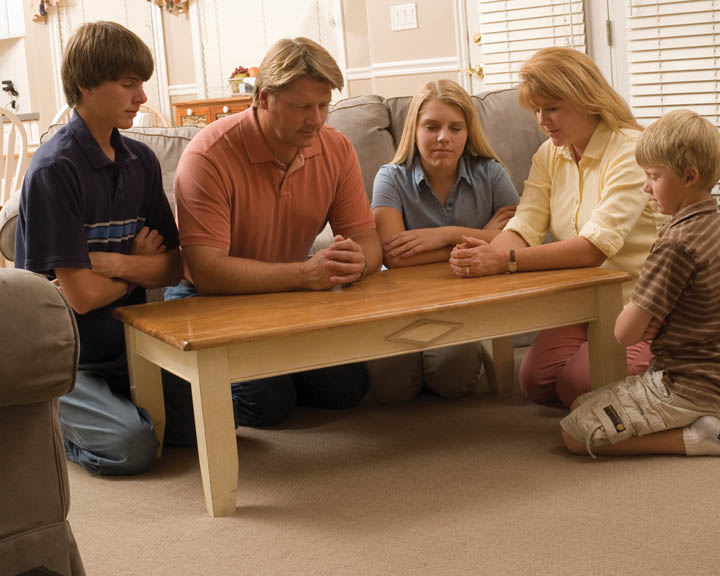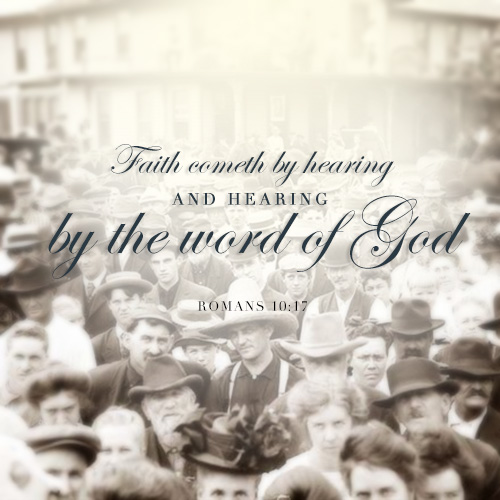During the General Relief Society Meeting held for Mormon women recently, it was announced that next year, the Relief Society would be making available a history of Mormon women. The General Relief Society President (over all the adult Mormon women worldwide), Julie Beck, explained:
“We study our history because it unites faithful women. The history of Relief Society is a Spirit-filled story of strong, faithful, purposeful women. As a part of the Lord’s restored Church, Relief Society can now be found in nearly 170 nations. Everywhere in the world adult women in the Lord’s Church can be given serious and important responsibilities.” (Daughters in My Kingdom”: The History and Work of Relief Society, Julie B. Beck, Relief Society General President)
She suggested that studying the history of the Relief Society will help us to better understand what God wants us to do and to be. When the Relief Society was first organized in the early days of the Church, there were many benevolent societies. Joseph Smith agreed that serving others was an appropriate sphere for women but he felt they could become more than just that, more than just a social club. They could have an important role to play in the growth of the Lord’s Kingdom, and so he made them more than just a club or society. He organized them to work under the direction of the priesthood, but also in the pattern of the priesthood. He, like other leaders since then, allowed the women to run their own organization and to choose which projects they felt were best suited to their needs. Of course, from time to time they are asked to take on certain projects, but Gordon B. Hinkley joked that the way the Mormons handle their women is to get out of their way and look at all the good they can do.
The Relief Society was organized in 1842 and Joseph Smith said the church would not be perfect without this organization, so great was the need for participation of the women in leading the church. Although their primary responsibility was to serve others, as demonstrated by their motto, Charity Never Faileth, they have, from time to time worked on other projects, including politics. They were active in the movement to help women gain legal rights in the early days of the women’s movement. Mormon women lost the right to vote when Utah became a state and they fought hard to get the secular state and federal government to return that right. They campaigned for other moral reforms as well.
They were educated by Joseph Smith himself in the gospel, to make sure they had the knowledge to do their work, and were encouraged to learn and study on their own. Under Brigham Young in Utah, Mormon women were often encouraged to embark on traditionally male careers, including becoming a doctor. Because many men—even married men in those days—were traveling as missionaries, women were needed who could take on what had been traditionally men’s work. Teenage girls were taught to prepare wagons and take long journeys alone, to care for bees, and to complete other tasks that would ensure their independence and courage.
Although the organization disbanded during the difficult times surrounding Joseph Smith’s murder, it reorganized in a new form in Utah, when Brigham Young, who took over leadership after Smith’s murder, asked the women to form organizations that would help the Indians. These groups made clothing and bedding for Indians in need. Later, many of these groups decided to stay organized, returning to their original purpose of serving the poor in their own communities. The Relief Society was officially restarted in 1866, although many groups were already well-organized.
The Relief Society, in the early days of the church, ran a number of businesses. They organized cooperatives, raised and saved grain for emergencies, and ran medical schools for women who were training to be midwives or doctors—long before the better-known battles were fought to get women into secular medical schools. From time to time, they have operated magazines.
Today, the Relief Society offers a broad range of services to women and to the church and community in general. One service provided for women in the church is the Visiting Teaching program. Women are asked to go with another woman to visit several Mormon women each month. They build a friendship with the women and keep an eye out for any special needs they might have, whether it’s a meal during an illness, food during unemployment, or someone to sit with in church. They provide as much of the service as possible themselves and arrange for others to assist when necessary. A compassionate service leader monitors the needs of the women in a congregation and makes sure they are met, including checking on elderly women who live alone or providing a listening ear to those who need one. This leader coordinates larger service projects, such as helping a family clean before they move or arranging meals to be brought in for a longer period of time.
Literacy is another focus of the Relief Society. A literacy leader coordinates all literacy needs for a congregation for both men and women. Men may serve as teachers and tutors in the program, but may not lead the program. The Relief Society has developed a special curriculum that teaches people to read using the scriptures. In addition to reading scriptures, students bring in words they want to learn and keep a journal. If they are unable to write, they dictate their entries to the teacher. When they learn to write a letter, which is taught in the class, the teacher will stop and have the student insert the letters he knows how to write. Once a student has completed the eighteen-month class, he is encouraged to become a teacher or an aid in the next literacy class, where he can model for the new students that success is possible. In this way, students will eventually have teachers who have conquered literacy themselves and understand the special challenges faced by their students.
Literacy encompasses more than just reading and literacy leaders can tackle any aspect of literacy that is needed. Programs include English as a Second Language with citizenship preparation as needed, teaching parents to raise readers, using the computer, journaling, and writing personal histories.
The Relief Society conducts a varied educational program. On Sundays, women study scripture and religious doctrine in their weekly meeting. Throughout the month, congregations can organize a variety of classes and programs to meet the needs of their own women, making the program appropriate for any culture. A typical American program might include a mommy and me class, foreign language instruction, exercise classes, home repair lessons, money management, career training, and blogging.
A conference held twice a year allows women to hear, in person or through a satellite, internet, or television broadcast, to listen to the three women who run the Relief Society at the International level, as well as one male leader chosen from the First Presidency (consisting of the prophet and his two counselors.)
Julie Beck currently heads the international Relief Society organization. There are other women leaders at regional and congregational levels, each operating with a high degree of autonomy. Local groups devote themselves to congregational and community service and education for their varied members. They frequently participate in humanitarian projects, which might include making kits to be distributed after a disaster, creating education supplies for children in developing nations, or putting together baby blankets for those in need.
Relief Society is designed to be adaptable to changing conditions and to the growing diversity of a world-wide church while remaining faithful to its most important function—that of Christ-like service.
About Terrie Lynn Bittner
The late Terrie Lynn Bittner—beloved wife, mother, grandmother, and friend—was the author of two homeschooling books and numerous articles, including several that appeared in Latter-day Saint magazines. She became a member of the Church at the age of 17 and began sharing her faith online in 1992.

